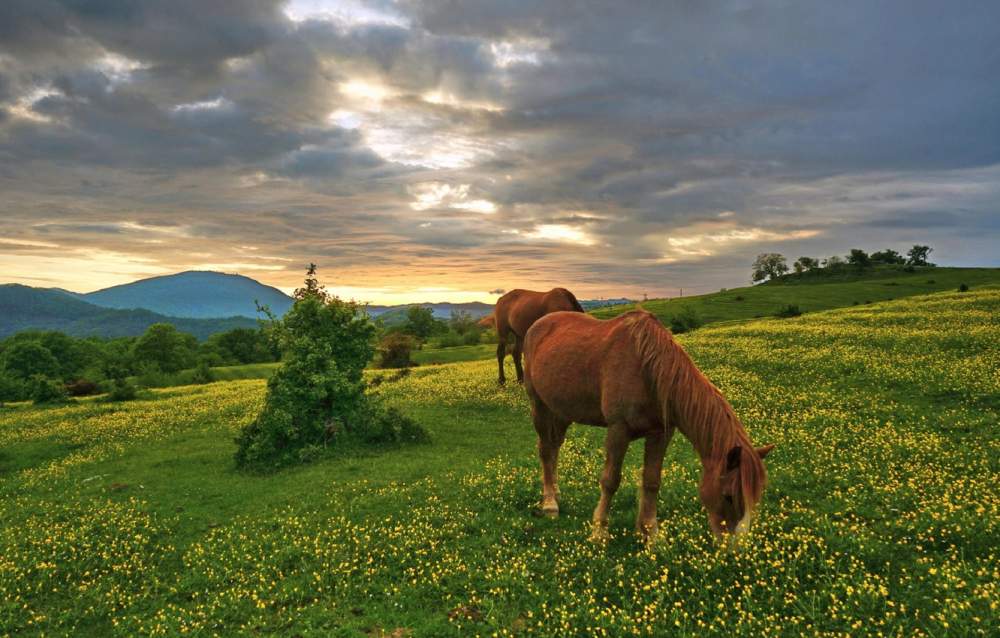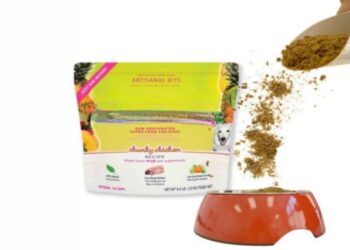Many owner riders dream of it: having your horse in the meadow, just for yourself. What better way for your equine companion than to be outdoors, in its natural environment, with all the leisure to graze on the rich pasture of the meadow that hosts it. This idyllic vision must however be balanced with the reality of the terrain, and as you will see, there are many elements to take into account before ever having your horse in a meadow. From the surface of the land to the pasture of the horses, through the choice of the meadow and its maintenance, we explain everything below.
How much land for a horse?
How much area are you going to need to keep your horse in the meadow? This is an essential question because when looking for the meadow, you will need to know the desired area to guide your research. Overall, it is customary to count an area of one hectare per horse, or 10,000 square meters, in an area where the grass is available in mass. If you find yourself in a more arid region, such as the south of France for example, you will probably have to multiply this order of magnitude by eight, or even ten, in order for your horse to have enough pasture available to eat.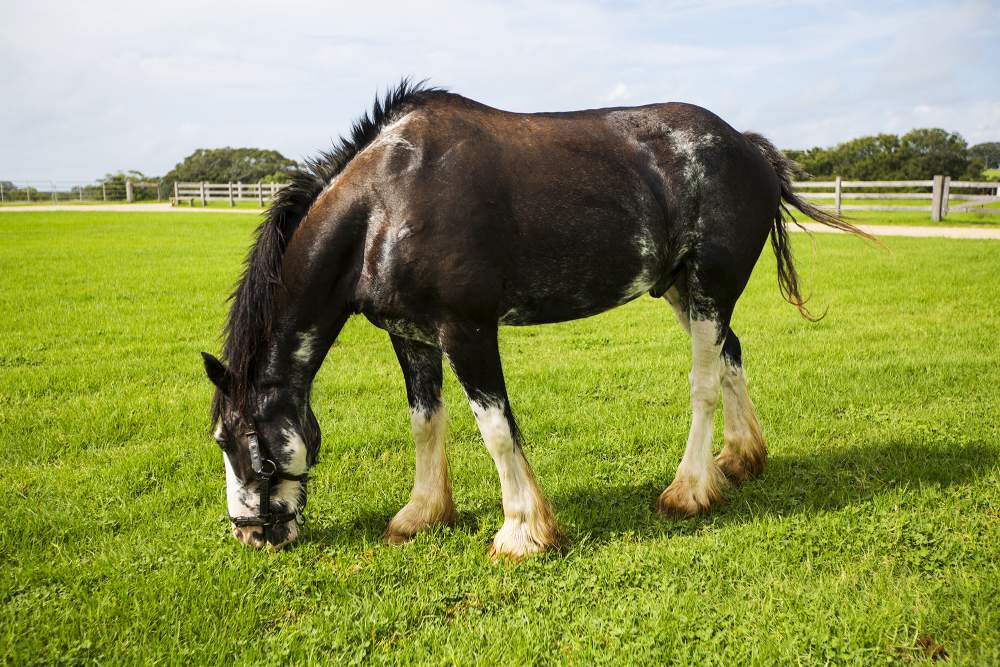
Besides the supply of grass, horses need enough space to exercise and run freely. They love the great outdoors: you will see the joy they will experience when you put them in the meadow for the first time.
Permanent or intermittent use?
The dimensions of the land also depend on its use.
Would you like to put your horse in the meadow during the day so that it can stretch its legs and bring it back to the stall in the evening? Or on the contrary, leave it in the meadow permanently? And this only in summer, or also in winter?
Reading suggestions; Horse Temperature: When And How To Take It?
A quadruped that returns to the box in the evening and receives feed concentrates as a supplement, will have a lower nutritional requirement than that of a horse whose only source of the food supply is pasture. The surface area of one hectare is calculated according to nutritional needs, because it is, theoretically, able to give your horse the possibility of feeding himself in complete autonomy!
What food in the meadow?
First of all, beware of grass very rich in nitrogen in early spring: it can be the cause of laminitis as well as colic. Overall, it is necessary to plan a gradual pre-training (over 8 to 10 days) to accustom the digestive system of your equine to this new diet, particularly if it was in the box during the cold season.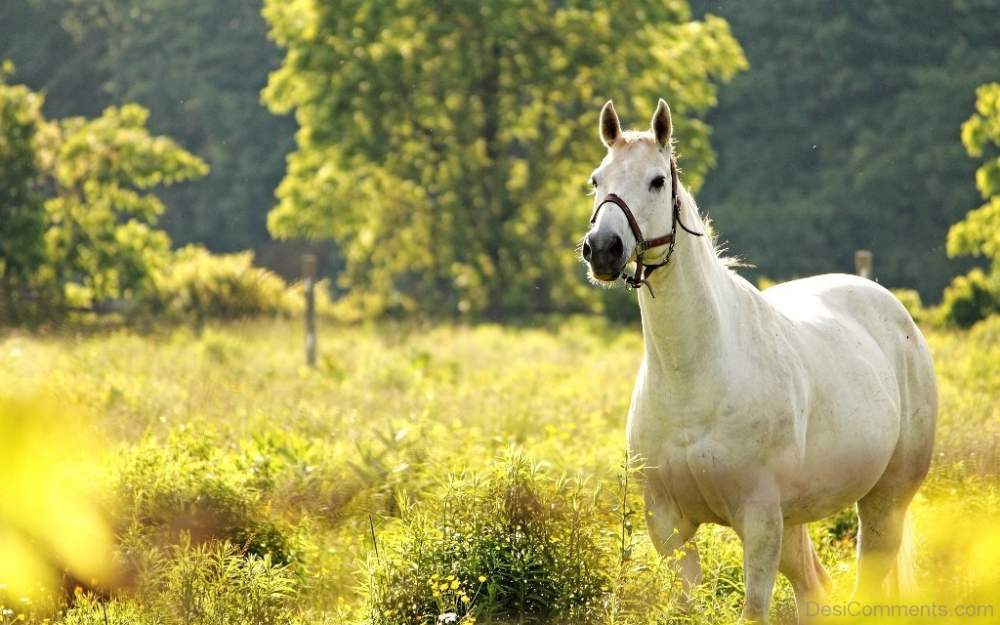
In addition, in winter, it’s a safe bet that the grass on the plot alone is not enough to meet its needs; especially since a horse tends to eat in larger quantities when it is cold. This can also be the case in summer if the grass is too scarce or the area of the field is not large enough.
We must then think of compensation solutions: supply it with hay and concentrates in addition. You will see how happy your horse will be to greet you when he sees you approaching with your food buckets.
Horse in the meadow: a social animal
The horse alone in the meadow?
The horse is a gregarious animal: he likes company. The latter does not adapt very well to living alone on a hectare. Certainly, you dream of opening the window in the morning and seeing your mount in the meadow neighing with pleasure at your sight. But the reality will be less sympathetic for your horse: isolated because, without a companion, he will be unhappy.
At least two
Make sure he’s at least with one other animal, and if it’s not a horse, it could very well be a donkey, pigs, or goats. But if they are two horses, ideally an area of two hectares should be considered.
However, two of them can live on one hectare. In this case, it will then be necessary to provide them with forage or concentrated feed in addition, because they will not have enough grass in the meadow to feed themselves.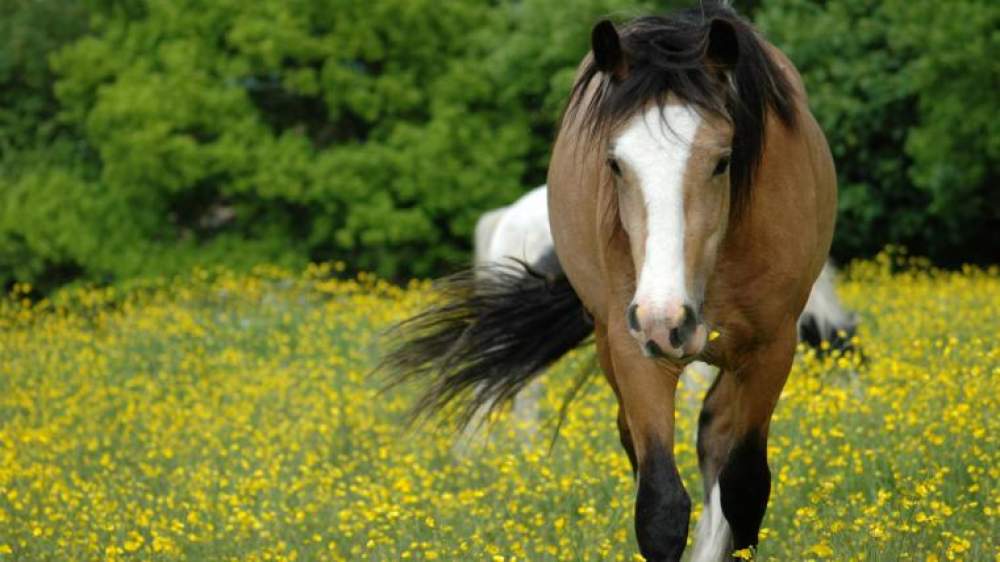
Optimize the plot
If you have a sufficiently large area, you can for example install a wire to separate the meadow into two plots: your horses will then stay in the first half and can graze at will. During this time, the grass on the other half will grow back. Then, you will alternate and pass the two horses on the other half, to allow time for this surface to be reconstituted. But don’t leave your horses for more than 15 days on the same plot.
Find the ideal meadow
How to choose the right land?
How to choose the right ground to accommodate your quadruped?
There are already certain exclusion criteria to respect: avoid the too steep ground, in which an old horse would have difficulty moving or could slide for example, as well as muddy or marshy soils, which among other things promote scabies. mud.
Reading suggestions; Lifespan of a Horse: Age, Food, and Health
Then from a practical point of view, choose a place that is not too far from your home, because you will be visiting it daily. Beyond 10 kilometers distance, the round trips will cost you time. If possible, aim for a field in the immediate vicinity of trails to go for a ride with your mount; you will be able to combine the useful with the pleasant. And if you plan to take lessons at an equestrian center, you will need to invest in a van or trailer to transport it there: in this case, do not stray too far from the nearest equestrian center!
Water for the horse in the meadow
A horse drinks on average between 30 and 40 liters of water per day (more during hot weather). This is a critical point for your horse: he must have an unlimited source of clean water, easily accessible on the plot.
The transport of water cans on the plot is restrictive: putting them in the car or trailer, unloading them, and filling the drinking trough is not the most pleasant. And this water chore requires diligence to water your darlings. We, therefore, recommend that you request a water meter to make your life easier and to benefit from the water on site. You can then fill and clean the watering trough, but also rinse the limbs of your horses and pass the jet through the round of loin when the ground is too dry.
Installations to be planned on the meadow
The horse meadow shelter and the hut
Perhaps the most essential of all facilities is a horse meadow shelter. Your horse can take shelter there to take shade, avoid flies and other horseflies which annoy him, and protect himself from bad weather.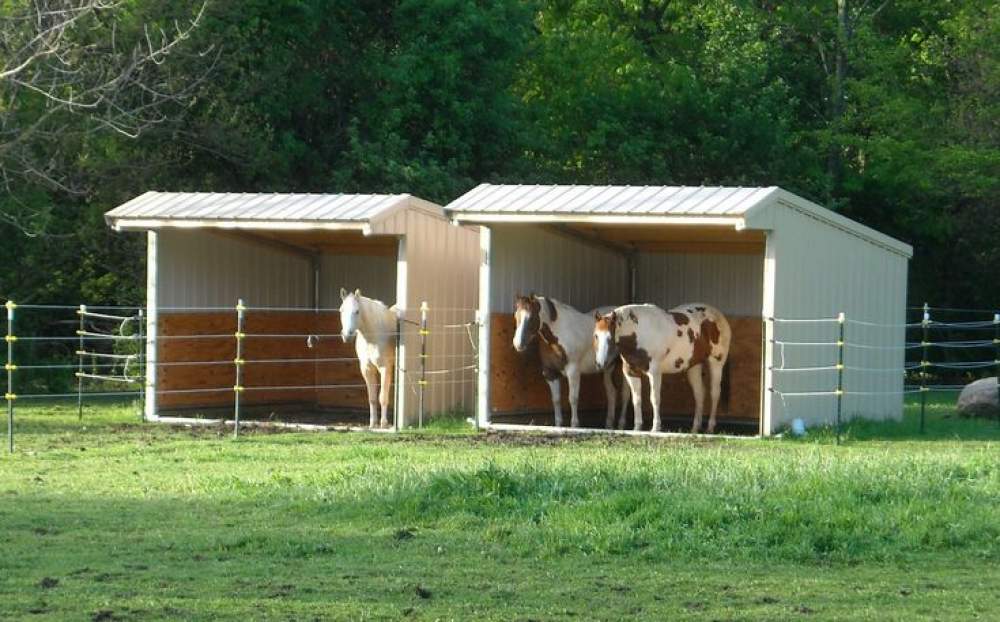
Do not forget also to install a hut to store hay and store equipment and tools for the maintenance of the field and the horses. Make sure it is locked to protect you from theft!
Loin ring, beam, and hay rack
There is not only idleness in life: install their round of loin so that the horses can work. You will then have to choose a diameter of 15, 18, or 20 meters depending on their size and the gaits you want to work on. Likewise, you can install a beam to tie your horses to it, as well as a hay rack for the fodder supply.
As you can imagine, all of these installations will require work from you to set up and maintain them!
Enclose a meadow for horses: compulsory
You do not want your animal to escape from the plot, create an accident, or be injured in its run. So install fences around your meadow: you can opt for ribbons or threads. In addition, by adding an energizer to have electric fences that will deter your pet from any attempt to escape. There are different systems: battery, battery, solar, or mains (although there is little chance that this last option will be possible in the field…). But above all, banish barbed wire that can hurt your horse!
For the good maintenance of the meadow and the installations
Field maintenance
It may at first glance seem poetic to have your horse in the meadow, but the reality is quite different. Unlike the dog, your equine is not clean and will not wait for you to defecate. You will therefore have to get used to its dung, maintain the field and clear the manure …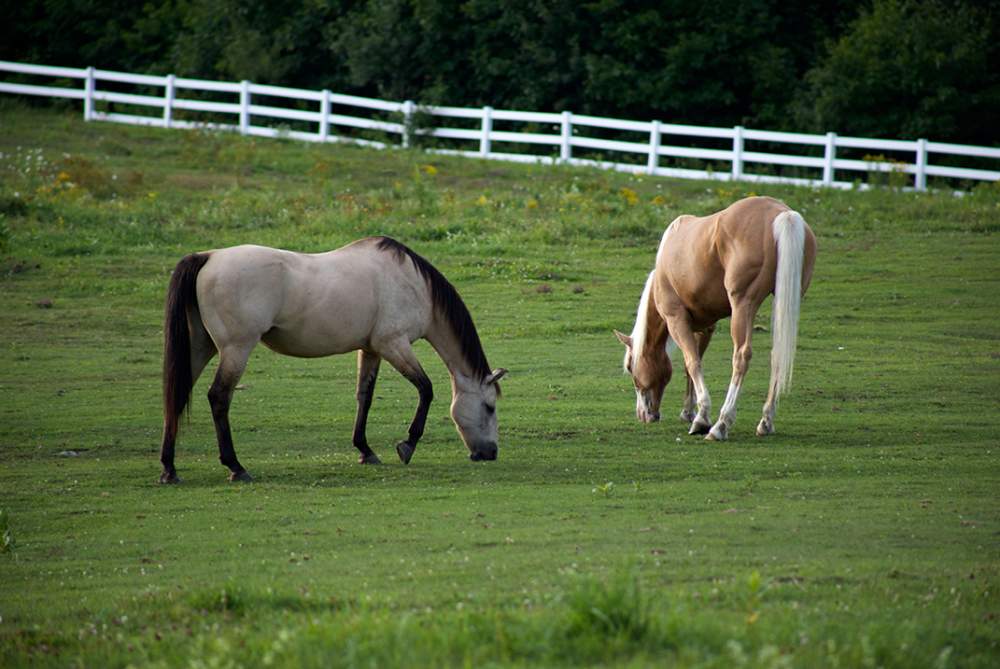
In addition to the disposal of manure, it will be necessary to weed, remove poisonous plants such as Jacob’s groundsel, as well as the brambles that grow on the ground, and re-sow the grass where it is trampled.
Also, take care to cut the grass that grows under the wires of the electric fences …
Maintenance of facilities
In addition, in addition to the maintenance of the field, it will be necessary to take care of the installations: the watering trough must remain clean, and the meadow shelter of the horse, be pasted regularly.
Putting your horse in the meadow
Horse in the meadow: advice for its entry
Do not be in a hurry, there is no point in wanting to speed up your entry.
If there are already several horses in the meadow in question, make sure there is enough surface area for your horse to enter smoothly, without the animals being too cramped.
You can for example start by putting a wire to separate the field: your animal will take its first steps with its congeners in a secure environment. They will then have plenty of time to get closer as they please and at their own pace. Be on the lookout because horses are sometimes very harsh with their fellows: they can prevent them from drinking, eating, or even biting or kicking them. So remember to check that the horses are well removed from the hindquarters because a shoe kick would be even more fatal.
Initial health precautions
Before putting your horse in the meadow, check that his tetanus and flu vaccinations are up to date.
In addition, deworm it ideally three days before its arrival in the meadow. Otherwise, you run the risk of it contaminating the meadow with its dung and infecting its grazing mates.
Conclusion
With a horse in the meadow, it will be much more complicated for you to go on vacation unless you know a trusted person nearby who can take over when you are away. Also, don’t underestimate the resulting commitment. To fully appreciate this, plan to be available for two hours a day. Finally, be aware that this will greatly change your habits at the equestrian center and that you may feel isolated. Expect hard times, but remember that is the price of freedom!


